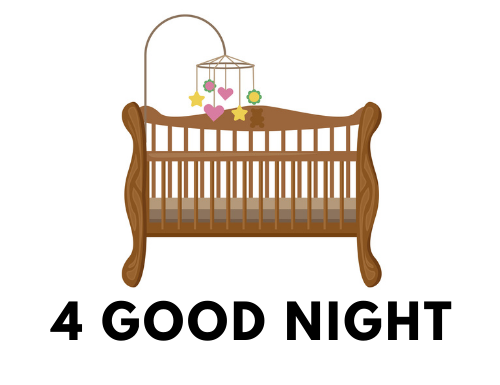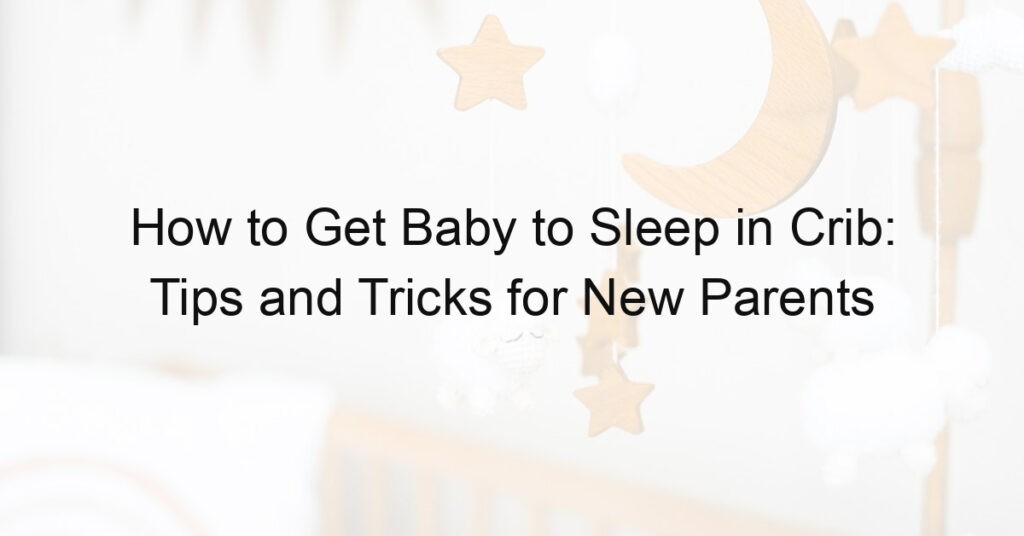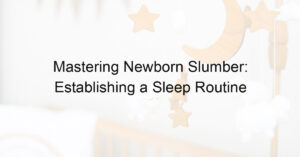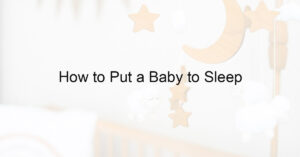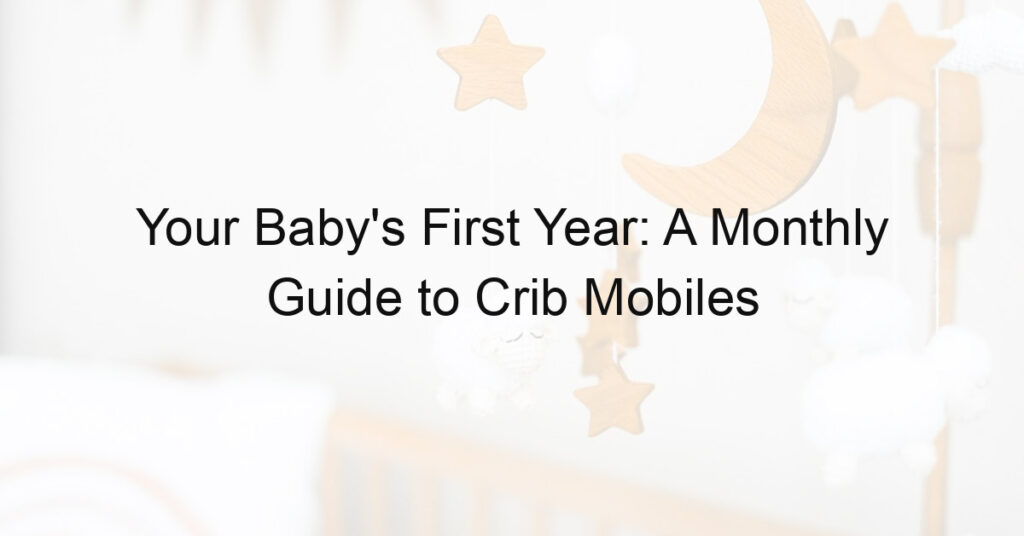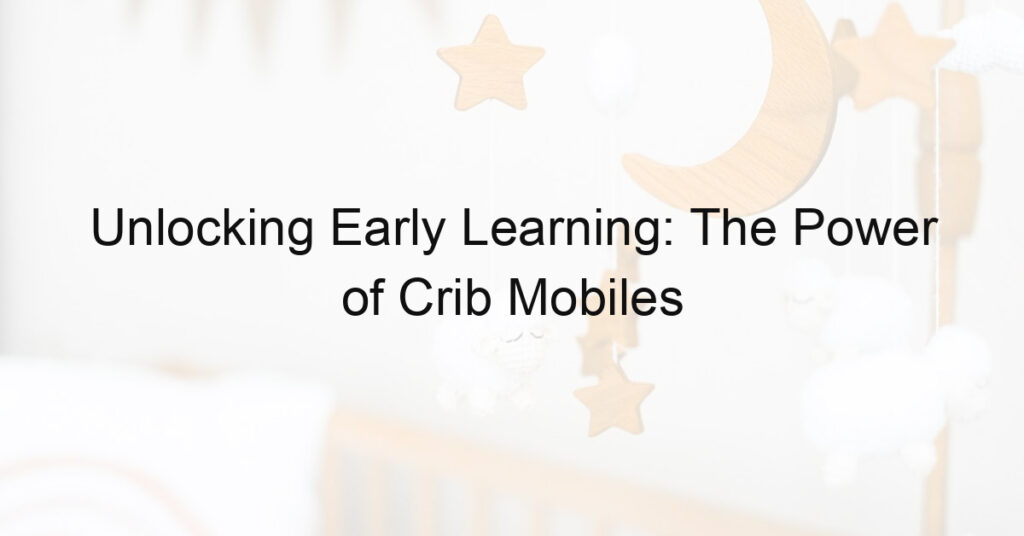Are you struggling to get your baby to sleep in a crib? Or wondering how to get baby to sleep in crib? You’re not alone.
Many parents find it difficult to transition their baby from sleeping in their arms or a bassinet to sleeping in a crib. But don’t worry, there are tips and tricks that can help make this transition easier for both you and your baby.
One of the first things to consider is the temperature of the room. Keeping the room cool is key, as overheating is a risk factor for SIDS. It may be beneficial to use a fan for air circulation.
Additionally, dressing your baby appropriately can help keep them comfortable in a cooler room.
In this article, we’ll explore more tips and tricks for how to get baby to sleep in a crib.
Establishing a routine is also important when it comes to getting your baby to sleep in a crib. Introduce set cues and habits that will let your baby know when bedtime has come.
A set routine will help your baby know that it’s bedtime, regardless of where they are sleeping. This can include a bath, reading a book, or singing a lullaby.
By establishing a consistent routine, your baby will be more likely to fall asleep in their crib.
Understanding Baby Sleep Patterns
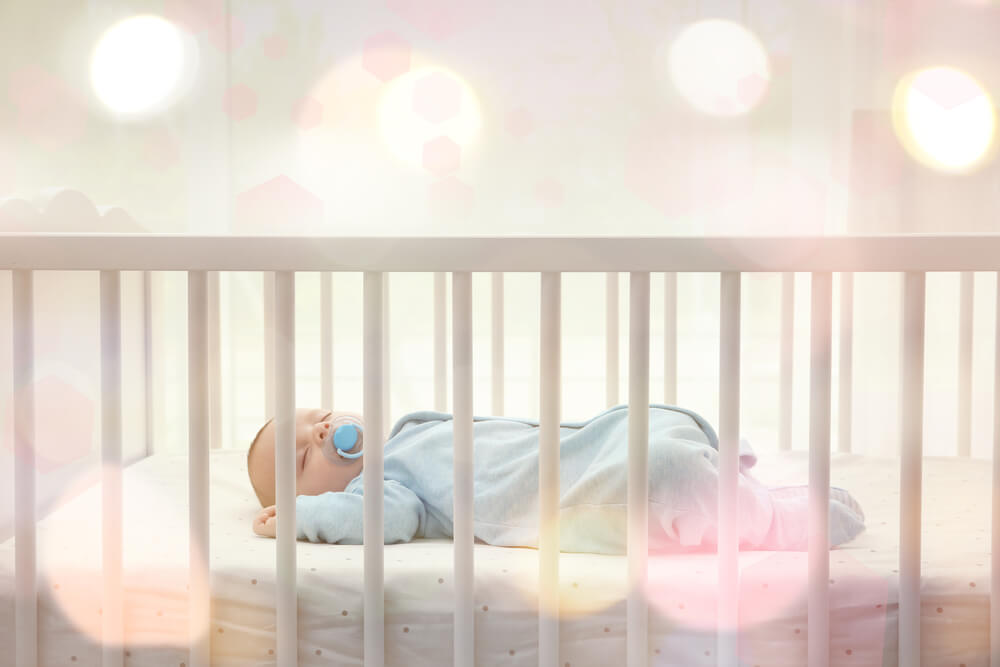
As a new parent, understanding your baby’s sleep patterns can help you develop a sleep routine that works best for both you and your baby. Here are some key points to keep in mind:
- Newborns sleep a lot: Newborns can sleep up to 16 hours a day, but they don’t sleep for long stretches at a time. They wake up frequently to feed, and their sleep cycles are shorter than those of adults.
- Sleep patterns change over time: As your baby grows, their sleep patterns will change. They will start to sleep for longer stretches at night, and their daytime naps will become more predictable.
- Sleep is important for development: Sleep is crucial for your baby’s growth and development. During sleep, their body produces growth hormones that help them grow and develop properly.
- Babies have different sleep needs: Every baby is different, and some babies need more sleep than others. Some babies may sleep for long stretches at night, while others may wake up frequently.
- Establishing a sleep routine takes time: It takes time to establish a sleep routine for your baby. Be patient and consistent with your approach, and don’t be afraid to make adjustments as needed.
By understanding your baby’s sleep patterns and needs, you can develop a sleep routine that works best for both you and your baby.
Remember to be patient and consistent, and don’t hesitate to seek advice from your pediatrician if you have any concerns about your baby’s sleep.
Creating a Comfortable Sleep Environment
Getting your baby to sleep in their crib can be a challenge, but creating a comfortable sleep environment can make all the difference. Here are some tips to help you optimize your baby’s sleep environment.
Choosing the Right Crib
Choosing the right crib is crucial for your baby’s comfort and safety. When selecting a crib, make sure it meets the safety standards set by the Consumer Product Safety Commission (CPSC).
Look for cribs with slats that are no more than 2 3/8 inches apart to prevent your baby from getting stuck between them.
Additionally, choose a firm mattress that fits snugly in the crib to reduce the risk of suffocation.
Optimizing Room Temperature
The temperature of your baby’s room can affect their sleep quality. The ideal room temperature for your baby is between 68-72°F (20-22°C). Use a thermometer to monitor the temperature and adjust the thermostat as needed.
Dress your baby in lightweight clothing and use a sleep sack or swaddle to keep them warm without the risk of loose blankets.
Using White Noise
White noise can help your baby fall asleep and stay asleep. It mimics the sounds your baby heard in the womb and can be soothing. You can use a white noise machine, a fan, or even a recording of ocean waves or rainfall.
Just make sure the volume is low and the source is placed away from your baby’s crib to prevent hearing damage.
By creating a comfortable sleep environment for your baby, you can help them sleep better in their crib. Remember to choose a safe and comfortable crib, optimize the room temperature, and use white noise to soothe your baby to sleep.
Establishing a Bedtime Routine
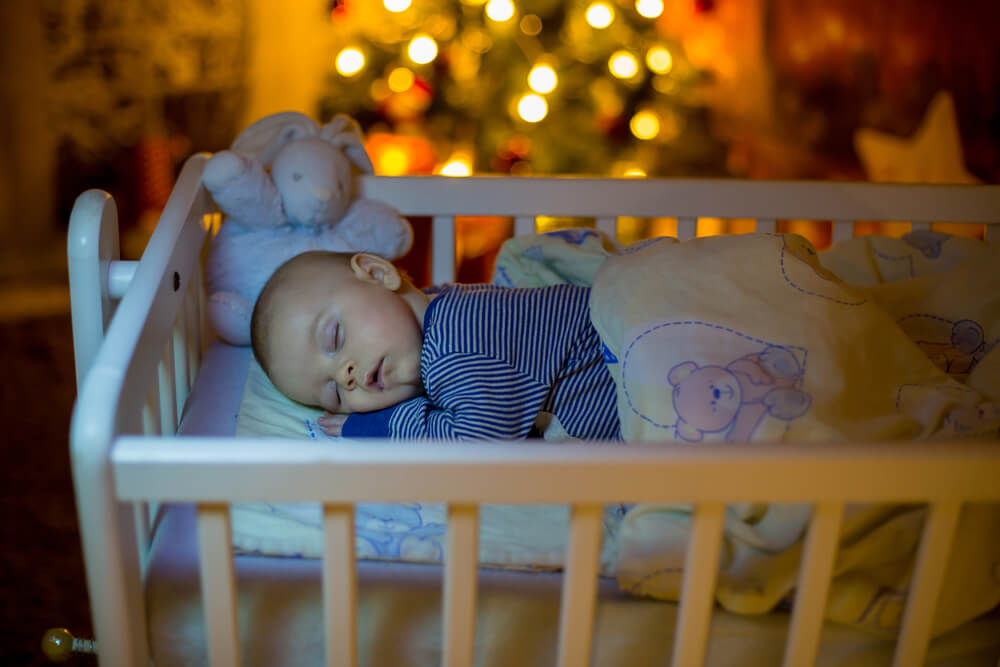
Establishing a bedtime routine is essential to help your baby sleep better and feel more secure. A bedtime routine can include several activities that help your baby wind down and prepare for sleep.
Here are some of the key components that experts recommend:
Bath Time
Giving your baby a warm bath before bedtime can help relax them and prepare them for sleep. Use mild soap and warm water, and make sure the room is warm and cozy. You can also add a few drops of lavender oil to the bathwater to help soothe your baby.
Reading a Story
Reading a story to your baby before bedtime can help them relax and feel more secure. Choose a book with simple, soothing language and calming illustrations. You can also use this time to bond with your baby and create lasting memories.
Soothing Lullabies
Playing soft, soothing music or singing a lullaby can help your baby relax and fall asleep. Choose music with a slow tempo and gentle melody. You can also use white noise, such as a fan or a sound machine, to help your baby sleep better.
By incorporating these activities into your bedtime routine, you can help your baby feel more relaxed and ready for sleep. Remember to be consistent and start your routine at the same time every night.
Over time, your baby will learn to associate these activities with sleep and will be more likely to fall asleep quickly and stay asleep longer.
Training Baby to Sleep in the Crib
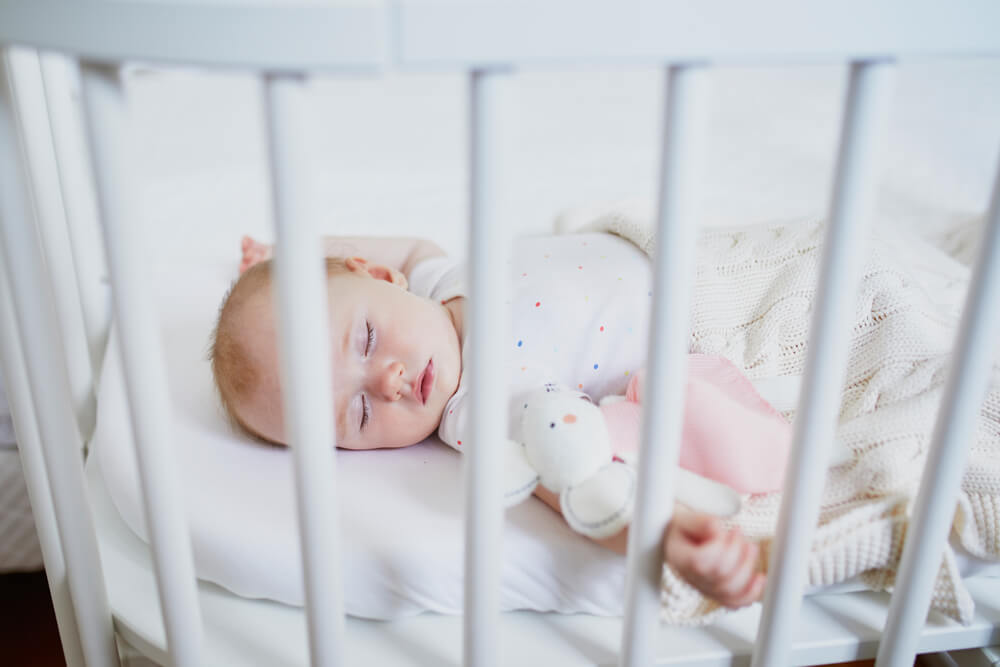
If you’re struggling to get your baby to sleep in their crib, don’t worry, you’re not alone. Many parents face this challenge.
However, with some patience, consistency, and the right techniques, you can train your baby to sleep in their crib. Here are some tips to help you get started.
Gradual Transition
One effective way to train your baby to sleep in their crib is by making a gradual transition. Start by placing your baby in their crib for daytime naps or for the first few hours of the night.
Once they get used to sleeping in their crib for short periods, gradually increase the time they spend in their crib. Eventually, they will feel comfortable sleeping in their crib for the entire night.
Consistent Sleep Schedule
Establishing a consistent sleep schedule is crucial when training your baby to sleep in their crib. Try to put your baby to bed at the same time every night, and follow a consistent bedtime routine.
This can include a warm bath, a story, a lullaby, or any other soothing activity that helps your baby relax and prepare for sleep.
Self-Soothing Techniques
Teaching your baby to self-soothe is another effective way to train them to sleep in their crib. This means helping your baby learn to fall asleep on their own, without relying on you to rock them or feed them to sleep.
One way to do this is by putting your baby in their crib when they are drowsy but still awake. This will help them learn to associate their crib with sleep. You can also try using a pacifier or a lovey to help your baby self-soothe.
Remember, training your baby to sleep in their crib takes time and patience. Be consistent, stay calm, and don’t give up.
With these techniques, you can help your baby develop healthy sleep habits that will benefit them for years to come.
Addressing Common Sleep Issues
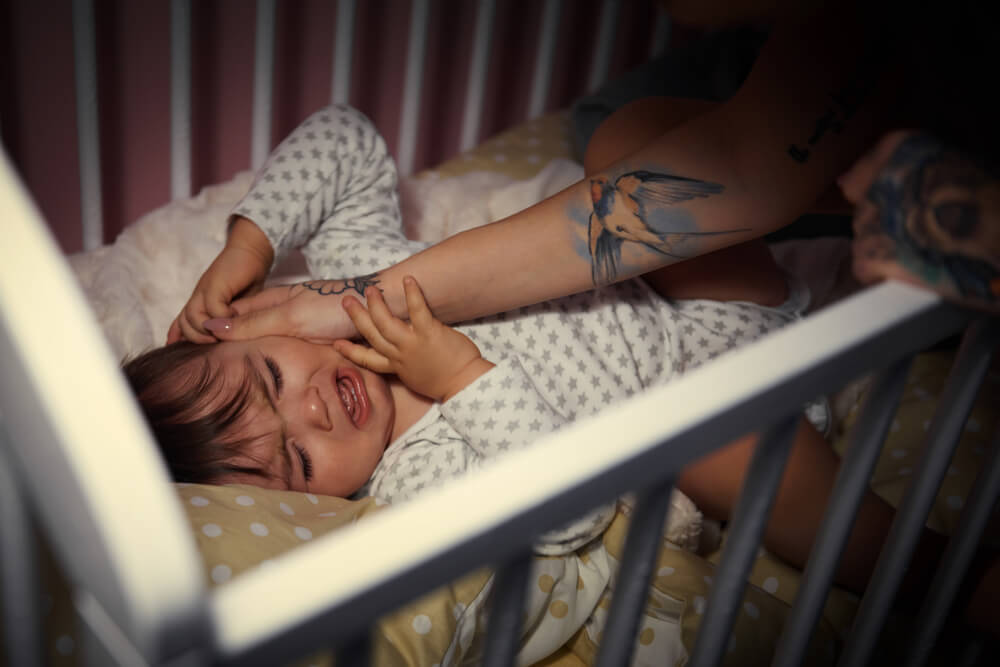
If your baby won’t sleep in their crib, you’re not alone. Many parents struggle with getting their baby to sleep in the crib. Here are some common sleep issues that can affect your baby’s ability to sleep in their crib.
Nighttime Feedings
If your baby is waking up frequently at night, they may be hungry. Newborns need to eat every 2-3 hours, so it’s normal for them to wake up at night for feedings.
As your baby gets older, they may still wake up at night for feedings, but they may not need to eat as often.
If your baby is waking up frequently at night, try feeding them before they go to sleep, and make sure they’re getting enough to eat during the day.
Sleep Regression
Sleep regression is a period of time when your baby’s sleep patterns change. This can happen around 4 months, 8 months, and 18 months.
During sleep regression, your baby may wake up more frequently at night, have trouble falling asleep, or refuse to sleep in their crib. Sleep regression is normal and usually lasts for a few weeks.
To help your baby get through a sleep regression, try to keep their sleep routine consistent and make sure they’re getting enough sleep during the day.
Separation Anxiety
Separation anxiety is a normal part of your baby’s development. It usually starts around 6-8 months and can last until your baby is 2-3 years old.
During separation anxiety, your baby may become upset when you leave the room or when they’re put in their crib. To help your baby with separation anxiety, try to make sure they feel safe and secure in their crib.
You can also try to gradually increase the amount of time you spend away from your baby so they get used to being away from you.
Remember, every baby is different, and what works for one baby may not work for another. If you’re having trouble getting your baby to sleep in their crib, talk to your pediatrician for advice.
With a little patience and persistence, you can help your baby learn to sleep in their crib.
When to Seek Professional Help
If you’ve tried everything and your baby still won’t sleep in their crib, it may be time to seek professional help.
Here are some signs that it’s time to consult a pediatrician or sleep specialist:
- Your baby is consistently waking up more than three times per night and won’t go back to sleep.
- Your baby has trouble falling asleep and is consistently awake for more than 30 minutes at a time.
- Your baby is consistently waking up before 5 a.m. and won’t go back to sleep.
- Your baby is over six months old and is still waking up every two to three hours at night.
These are all signs that your baby may have a sleep disorder or underlying medical condition that needs to be addressed.
A pediatrician or sleep specialist can help you determine the cause of your baby’s sleep problems and develop a plan to help them sleep better.
In addition, if you’re feeling overwhelmed or exhausted by your baby’s sleep problems, it’s important to seek support from family, friends, or a therapist.
Taking care of a baby who won’t sleep can be incredibly challenging, and it’s important to take care of your own mental health as well.
Remember that every baby is different, and what works for one baby may not work for another. It’s important to be patient and persistent in your efforts to help your baby sleep in their crib.
With time, patience, and the right support, you can help your baby develop healthy sleep habits that will benefit them for years to come.
Frequently Asked Questions

How can I transition my baby from co-sleeping to sleeping in a crib?
Transitioning your baby from co-sleeping to sleeping in a crib can be challenging, but it’s important for your baby’s safety and development. Start by placing the crib in your room, then gradually move it further away until it’s in your baby’s own room. You can also try putting your baby in the crib for naps during the day to get them used to the new sleeping arrangement.
What are some tips for getting a 6-month-old baby to sleep in a crib?
At 6 months old, your baby is starting to develop a more regular sleep routine. To get them to sleep in a crib, establish a consistent bedtime routine, such as a bath, book, and lullaby.
Swaddle your baby to help them feel secure, and place them in the crib while they’re drowsy but still awake.
You can also try using a white noise machine to help soothe them to sleep.
How can I get my 10-month-old baby to sleep in a crib?
By 10 months old, your baby may have developed some sleep associations, such as needing to be rocked to sleep. To get them to sleep in a crib, gradually reduce the amount of rocking or other sleep associations.
Establish a consistent sleep routine, and put your baby in the crib while they’re still awake. You can also try using a lovey or other comfort item to help them feel secure.
What are some techniques for getting an 8-month-old baby to sleep in a crib?
At 8 months old, your baby may be starting to develop separation anxiety, which can make it harder for them to sleep in a crib.
To help them feel more secure, establish a consistent bedtime routine, and use a lovey or other comfort item.
Put your baby in the crib while they’re still awake, and use a reassuring voice to let them know you’re nearby.
What are some strategies for getting a baby to sleep in a crib without crying it out?
Crying it out can be a difficult method for some parents to use. Instead, try a more gradual approach, such as the pick-up-put-down method.
This involves picking up your baby when they cry, soothing them until they’re calm, and then putting them back in the crib.
Repeat as necessary until they fall asleep. You can also try using a gentle sleep training method, such as the Ferber method, which involves gradually increasing the amount of time you leave your baby to self-soothe.
What are some ways to help my baby nap in a crib instead of in my arms?
To help your baby nap in a crib, establish a consistent nap routine, such as a short story or song before naptime.
Place your baby in the crib while they’re still awake, and use a lovey or other comfort item to help them feel secure. You can also try using a white noise machine to help soothe them to sleep.
If your baby wakes up during the nap, try to soothe them back to sleep in the crib instead of picking them up.
